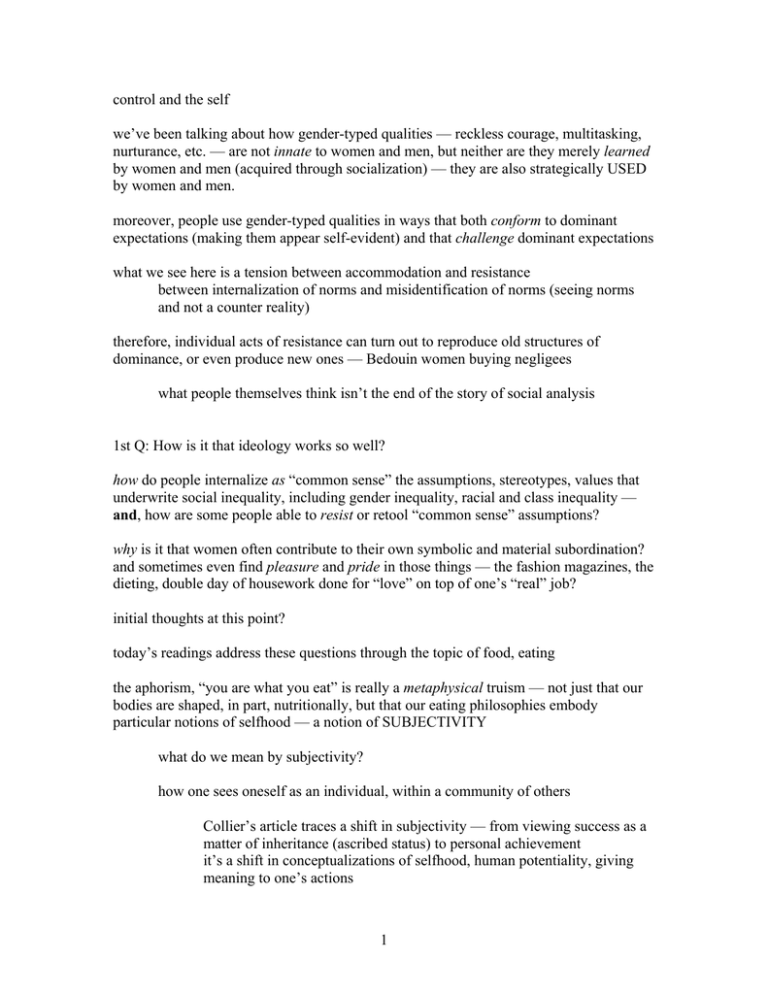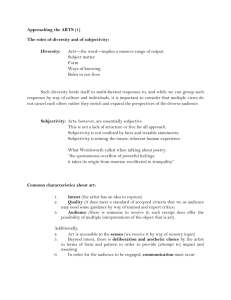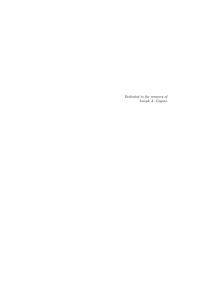control and the self
advertisement

control and the self we’ve been talking about how gender-typed qualities — reckless courage, multitasking, nurturance, etc. — are not innate to women and men, but neither are they merely learned by women and men (acquired through socialization) — they are also strategically USED by women and men. moreover, people use gender-typed qualities in ways that both conform to dominant expectations (making them appear self-evident) and that challenge dominant expectations what we see here is a tension between accommodation and resistance between internalization of norms and misidentification of norms (seeing norms and not a counter reality) therefore, individual acts of resistance can turn out to reproduce old structures of dominance, or even produce new ones — Bedouin women buying negligees what people themselves think isn’t the end of the story of social analysis 1st Q: How is it that ideology works so well? how do people internalize as “common sense” the assumptions, stereotypes, values that underwrite social inequality, including gender inequality, racial and class inequality — and, how are some people able to resist or retool “common sense” assumptions? why is it that women often contribute to their own symbolic and material subordination? and sometimes even find pleasure and pride in those things — the fashion magazines, the dieting, double day of housework done for “love” on top of one’s “real” job? initial thoughts at this point? today’s readings address these questions through the topic of food, eating the aphorism, “you are what you eat” is really a metaphysical truism — not just that our bodies are shaped, in part, nutritionally, but that our eating philosophies embody particular notions of selfhood — a notion of SUBJECTIVITY what do we mean by subjectivity? how one sees oneself as an individual, within a community of others Collier’s article traces a shift in subjectivity — from viewing success as a matter of inheritance (ascribed status) to personal achievement it’s a shift in conceptualizations of selfhood, human potentiality, giving meaning to one’s actions 1 what kind of subjectivity does Counihan see American college students enacting through their food rules? we embody the principle of achieved status through our relationship to food thin = self-control, moral superiority — higher social status (and economic) fat = lack of self-control, lack of pride, moral inferiority — lower socioecon status eating is a way of incorporating cultural values are these shared values gendered? do they play out differently to produce gender? not that all men/women eat differently, but styles of eating are gendered do we see a tension here b/w agency and subordination/power and resistance? Gremillion: slender, fit body = autonomy and success for women, it also implies dependence on others’ approval (perhaps especially men’s) Counihan: practices that contribute to women’s subordination as a whole (emphasis on attractiveness to men rather than, say, strength) can ALSO provide individual women with measure of power within status quo — patriarchal bargain it also sorts out a hierarchy among women and girls the article on anorexia demonstrates the logical conclusion of the values, cultural ideas embedded in our food rules Helen Gremillion ethnography of food rules in an eating disorder clinic (attached to research university; patients come from the same demographic pool as Counihans’ students) let’s start with the story of 16 year-old Maude — exaggerated version of the discourse of Counihan’s students: “Maude talked to me about the link b/w weight loss and her creation of a unique and independent identity, which she equated with her ability to achieve (in school and in other activities). For Maude, losing weight was no effort at all. But the effort it took to keep up with all her activities at increasingly lower weights balanced out the ease of losing weight… Maude implied that she kept losing weight so that she could continually test her ability to achieve. But, at the same time, she said that this balancing act was ‘no big deal.’ It was important to Maude that her achievements felt natural to her identity, not like a test.” (397) 2 so, for Maude, extreme weight loss didn’t reflect distorted body image (didn’t see herself, or fear herself, as ‘fat’), but an endless form of body work that displayed achievement achievement for women about self-control, not power; do you agree? “Bodies are imagined as resources for fitness and health, and the fit body is an icon for achieving individualism, productivity, and ‘self-actualization’ within late capitalist consumer culture in the contemporary United States” (385) Gremillion’s thesis: anorexia is not so much a pathology, but logical conclusion of dominant cultural values — extreme response to embodying contradictory messages of feminine fitness — meaning both physical fitness and social/moral fitness understand? what do you think? relationship b/w consumption and production? would you agree that this is a particular problem for women? now, Gremillion goes further to argue that psychiatric treatment of anorexia contributes to the anorexic subjectivity — sense of self — because it operates within the same cultural logics that produce anorexia in the first place HOW? examples… repercussions for emphasis on achieved status: we — particularly girls/women — both ARE our bodies (objectified as numbers, body parts, sensuality, reproductive capacity) and must continually WORK ON our bodies (to demonstrate control, status, demonstrate fitness for masculine workplace) So, we’re at the end of the first thematic section of class — gender and labor not only have we looked at the importance of gender in the workplace, in negotiating paid and unpaid labor in the domestic sphere — we’ve also talked about how, in a capitalist market-based society where status is imagined as being based on personal achievement, there’s a lot of work that goes into achieving what I call in my book gender proficiency — to produce gender-appropriate bodies, cultivate gendered subjectivities NEXT TIME we’ll begin adding to this discussion the very crucial element of sexuality — beginning with the history of the very idea of sexual orientation, or sexuality-based identity — important readings how does sexuality complicate gender, and vice versa? 3 MIT OpenCourseWare http://ocw.mit.edu 21A.231J / WGS.455J Identity and Difference Spring 2006 For information about citing these materials or our Terms of Use, visit: http://ocw.mit.edu/terms.





